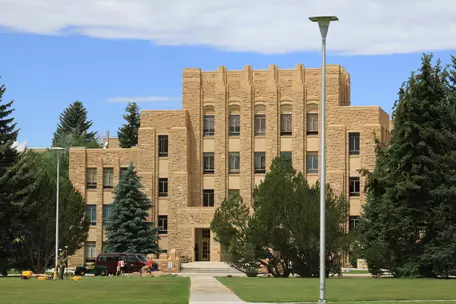Work with Your Administration

This page is adapted from Kate Miller's presentation The Administrative Perspective, given at the 2014 Getting the Most Out of your Introductory Courses workshop.
Making large-scale changes usually requires resources, but acquiring resources does not have to be a barrier to change. Instead, writing an internal proposal to deans or other administrators can be a highly effective way to garner support and legitimacy amongst your colleagues, focus the institutional resources you need, as well as acquire funding to purchase supplies or pay salaries. Many institutions offer small grants for faculty to develop courses or curricula. If your institution does not, or if the scale of change you have in mind is larger than these grants can support, don't be discouraged. According to Kate Miller, Dean of the College of Geosciences, Texas A & M, administrators like to see good ideas emerge from their faculty, and can often work to allocate resources to help them.
Build a Coalition of the Willing
Bringing your colleagues together around the idea of change is an important first step. A SWOT analysis can help you get started building that coalition by opening a discussion about how everyone perceives the introductory courses in the department. Don't be afraid to seek willing colleagues outside your department, however, who have already been successful in making changes or who can contribute to your effort in other ways.
Learn About Your Environment
As a faculty member within a department, it is easy to focus on just the aspects of the department that are relevant to you. When approaching your administration for support, however, you will make a better impression if you can demonstrate that you are familiar with the larger landscape of the institution and can describe how your goals fit in to the bigger picture. Components of the institutional environment you may want to familiarize yourself with include:

- Your own students: Who takes your introductory courses and why? Are there certain groups with particular needs, like pre-service teachers or civil engineering majors? What is the demographic breakdown?
- Your IT department and culture: If you are thinking about offering more online learning opportunities or integrating more technology or needing wireless bandwidth, you will want to know what resources the institution can offer to support you. Does IT have people dedicated to the course management system? To improving technology in the classrooms?
- Your classroom facilities: You may feel stuck in a particular classroom infrastructure, but take a tour of the campus. What else is available in other departments? Are there examples of what you'd like? Can you share classroom space or get access to other facilities?
- Your professional development resources: Many institutions have a center for teaching and learning or something similar. These centers can provide help with evaluation and assessment, professional development, and other resources, and often are underutilized.
- Your institution's fundraising goals: Your institution (or entity within it, such as a school or college) likely has fundraising initiatives that involve improving student learning or engagement. Tying your goals explicitly to these fundraising goals helps administrators support change.
Draw Up a Short Proposal
Putting together a brief internal proposal to your administration can facilitate change in a number of ways. In particular, a proposal can focus the goals and efforts of the coalition of the willing you've assembled; legitimize your efforts--even if the administration chooses not to fund your proposal, you have something to show for your work; and it can help the administration showcase your ideas around your institution.
While an internal proposal doesn't need to follow the strict guidelines of NSF or other external funding sources, your proposal will be better received if it includes:
- The motivation for making changes. Ideally, this will include evidence for what is not currently working and evidence for why the changes you propose will work. See more about gathering evidence. It is also helpful to make strong ties to your institution's mission and goals.
- An implementation plan with a timeline. Be realistic about how much time it will take, when faculty are available to work together, and how this will fit within the academic schedule.
- Milestones and/or deliverables. What will the end product be, and how will you know you've gotten there? What can your administrators point to at the end?
- A budget. Making change usually requires resources, and this is a good place to be realistic about the actual costs. How much faculty time will this process take? Are there components you could use graduate or undergraduate student assistants for? Don't pad your budget unnecessarily, but show that this is an important effort.
What is the Dean Thinking?
Department chairs, deans, and other administrators are balancing a lot of concerns, and your proposal is only one of them. Your proposal is undoubtedly going to elicit both positive and negative responses from them. Here are a few of the reactions you might expect:

Positive
- Wow, what a great idea that has bubbled up from faculty!
- This could make me look good because I'm... (implementing research-based pedagogies, improved student learning outcomes, increased enrollment...)!
- This fits with our mission of.... (assuming you've done your homework)!
Less positive
- This will be expensive (time and paperwork, training, supplies, new technology, student complaints, etc.).
- How will this be sustained after this person (or people) move on? Will this become an "orchid" course (one that requires special care and feeding)?
- Introductory courses are not as important as... (developing new programs, reaching new audiences, etc.).
The Administrative Perspective
Kate Miller, Dean of the College of Geosciences at Texas A&M, gave a presentation on the administrative perspective at the 2014 Getting the Most out of Your Intro Courses workshop.
- Listen to a screencast of her presentation, or
- Download her slide showing an administrative perspective on change in introductory geoscience courses.

